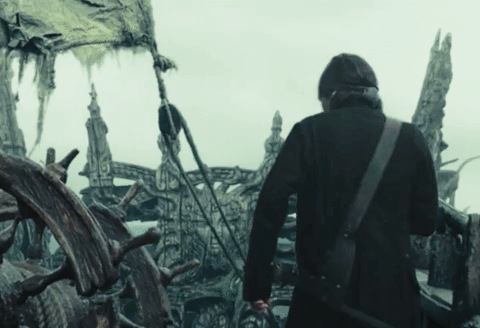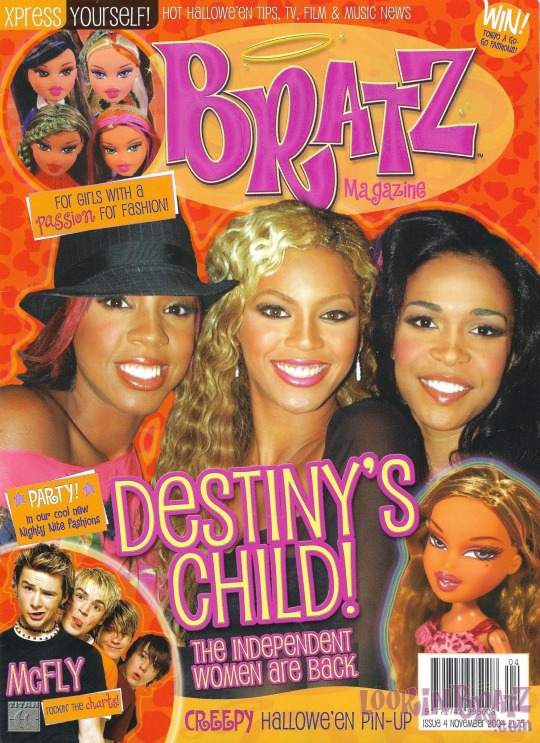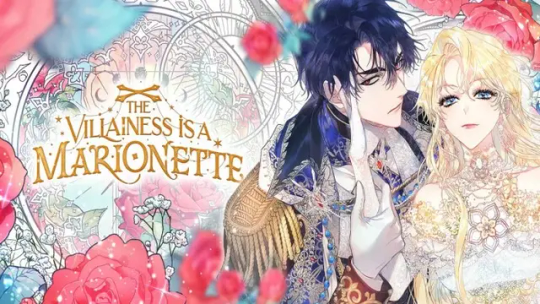#the destiny of bloom
Text








Bratz Magazines
#Bratz Magazine#2006#2007#2008#2009#destinys child#ashlee simpson#Orlando bloom#hannah montana#Rihanna#Bratz#Bratz dolls#hilary duff#lindsey lohan#beyonce#y2k#2000s#2000s nostalgia#2000s kids#2000s style#y2k nostalgia#00s#y2k aesthetic#y2k style#2000s kid#00s nostalgia#2000s aesthetic#2000s core#y2kcore#y2k fashion
2K notes
·
View notes
Text



Destiny 2: Devotion
#destiny 2#the final shape#d2: the final shape#destiny 2 the final shape#the pale heart#destiny 2 the pale heart#lost sector the blooming deep#the blooming deep#pale heart the blooming deep#cayde 6#crow#destiny 2 cayde 6#destiny 2 crow#bungie#destiny 2 pc
21 notes
·
View notes
Text










inspired by this post
#pirates of the caribbean#potc#will turner#william turner#curse of the black pearl#dead man's chest#at world's end#orlando bloom#tia dalma#naomie harris#destiny#a touch of destiny#shipwrecks
858 notes
·
View notes
Text
I cant believe Caitl was ranking on my girl Luzaku like that,,, Luzaku even tried to compromise with her 😭😭😭
#destiny 2#the final shape#luzaku#the blooming deep#the dialogue between them happens at the end of her lost sector
22 notes
·
View notes
Text
Fellas is it unhealthy to reread “Destiny’s Bloom” by PhoenixDiamond more than 10 times

47 notes
·
View notes
Text

Judge Holden by Rob Wood (2021)
“The judge is clearly no ordinary mortal, but at times it is suggested that he is more of a god than a demon. Sitting half-naked in front of the fire, the judge is described as a "great pale deity" (92). Later, the judge appears as a statue of some godlike being or idol. His eyes, like a sculpture's, are "empty slots" (147). Sitting on the ground with "his hands rested palm down upon his knees," the judge seems to be engaged in deep meditation 147). Rick Wallach argues that here the judge " incarnates the attributes of an oriental deity." Specifically, "the judge's poses suggest Shiva," whose "visage, like Holden's, is always serene amid the carnage he engenders" (128-29). The men seated around the judge grow wary of this meditative state, "so like an icon was he in his sitting that they grew cautious and spoke with circumspection among themselves as if they would not waken something that had better been left sleeping" (147). The implication is that the men grow fearful in the judge's presence, because they sense something otherworldly and malevolent.
The judge is situated somewhere between the demonic and the godlike, a position that corresponds to the Gnostic view of the god of this world. As Hans Jonas explains, the Gnostics believed that demons known as archons "collectively rule over the world" and "are also creators of the world, except where this role is reserved for their leader, who then has the name of demiurge" and "is often painted with the distorted features of the Old Testament God" (43-44). The human spirit is "a portion of the divine substance from beyond which has fallen into the world; and the archons created man for the express purpose of keeping it captive there" (44). The demiurge and his archons conceal the existence of the divine source, or the alien God, in order to keep human beings imprisoned in the cosmos. Thus Gnostic theology identifies the biblical God, Yahweh, as a demon, responsible not only for the creation of the world but also for the obscuration of divine Reality. By conflating the creator God and the devil into one entity, Gnostic theology creates a new kind of deity, whose simultaneously demonic and godlike characteristics are reflected in the multifaceted enigma that is Judge Holden.
In "Gravers False and True: Blood Meridian as Gnostic Tragedy," Leo Daugherty argues that "gnostic thought is central to Cormac McCarthy's Blood Meridian" (159) and perceptively identifies the judge as one of the Gnostic archons, or perhaps even the demiurge himself. Daugherty writes that like the "archons, Holden also possesses all the other characteristics of Yahweh as the Gnostics saw him: he is jealous, he is vengeful, he is wrathful, he is powerful and - most centrally - he possesses, and is possessed by, a will" (163). The "Earth is the judge's" (164), writes Daugherty, and, indeed, the judge is described as seeming "much satisfied with the world, as if his counsel had been sought at its creation" (140). Christopher Douglas draws attention to McCarthy's use of "as if," arguing that it "marks the failure of traditional realist language to evoke the larger theological design behind the events of the novel and the impossibility of linguistically imagining the design that McCarthy suspects must lurk behind the amoral nothingness of the world" (13). Thus, far from dismissing the judge's participation in the creation of the world as a hypothetical fantasy, McCarthy's "as if" actually gestures toward the ineffable and unutterable reality of this vision.
Sitting in a saloon, the judge is depicted "among every kind of man, herder and bullwhacker and drover and freighter and miner and hunter and soldier and pedlar and gambler and drifter and drunkard and thief," but though he "sat by them," he remained "alone as if he were some other sort of man entire" (325). Once again, we may apply Douglas's reading to McCarthy's characteristic usage of "as if," identifying it as a linguistic marker pointing to a "larger theological design" rather than a simple exercise in hypothetical rhetoric. Although the judge seems perfectly at home in the crazed, blood-soaked world of Blood Meridian, it is continually suggested that he is somehow not of this world. This is yet another of the judge's paradoxical attributes that can be resolved in the light of Gnostic thought. Gnostic texts often refer to the world as the "inn" in order to emphasize the concept that the pneuma lives in temporary exile from its true home. The archons can be thought of as "the 'fellow-dwellers of the inn' though their relation to it is not that of guests" (Jonas 56). Hence, just as the archons inhabit the realm of the manifest world without being human, the judge walks among men while being no ordinary mortal. Furthermore, the judge's existence is not limited to the so-called Wild West of the 1850s, for he was also "among the dregs of the earth in beggary a thousand years and he was among the scapegrace scions of eastern dynasties" (325). This suggests that the judge cannot be limited by time, place, or social hierarchy; his existence stretches back to distant times, distant lands, and infiltrates all levels of human society, from beggar to king.
Most disturbingly, the judge seems to possess no beginning and no end. In a fit of ether-induced delirium, the kid experiences a revelation regarding the judge's mysterious lack of origins: "Whoever would seek out his history through what unravelling of loins and ledgerbooks must stand at last darkened and dumb at the shore of a void without terminus or origin and whatever science he might bring to bear upon the dusty primal matter blowing down out of the millennia will discover no trace of any ultimate atavistic egg by which to reckon his commencing" (310). The kid's vision reveals that the origin of the judge cannot be uncovered through genealogy, nor scientific enquiry; any attempt to do so will only lead one back to the primordial void, the chaos that precedes the existence of the cosmos in the creation myths of countless traditions. Similarly, the judge has no final destination; in the final paragraph of the novel he is dancing an eternal dance, reminiscent of Shiva's cosmic dance of destruction: "He never sleeps, the judge. He is dancing, dancing. He says that he will never die" (335). Ordinary sleep is a minor prelude to the great sleep of death and the immortal judge is eternally wakeful.
Harold Bloom comments on the judge's lack of origins in How to Read and Why, but he curiously argues against a Gnostic interpretation of the passage. Despite the fact that Bloom identifies McCarthy as a Gnostic - "Faulkner is a kind of unknowing Gnostic; West, Pynchon, and McCarthy in their different ways are very knowing indeed" (237) - and is prepared to admit that "McCarthy gives Judge Holden the powers and purposes of the bad angels or demiurges [sic] that the Gnostics called archons," he inexplicably goes on to insist that McCarthy is actually telling "us not to make such an identification," because "any 'system,' including the Gnostic one, will not divide the Judge back into his origins. The ultimate atavistic egg' will not be found" (Modern Critical Views 4). I agree with Bloom's assertion up to a point, namely that the supernatural nature of the judge is such that he surpasses the limitations of the human mind and thus cannot be limited to any one system of thought. Nevertheless, certain aspects of the judge's nature may be illuminated by references to the various spiritual and philosophical traditions that have attempted to address the problem of evil. This is the line of argument adopted by Steven Frye, who argues that the judge's purported lack of origins should not discourage us from interpreting the literary figure in the context of various systems and traditions, including, but not limited to, "Judeo-Christian cosmology and typology, scientific materialism with its often purely atheist implications, the continental philosophy of Friedrich Nietzsche, philosophical nihilism, and the fascinating conceptions of ancient Gnosticism." Frye argues that Judge Holden "is by no means a patchwork creation of competing philosophical configurations, but a distinctive artistic embodiment of darkness that stands apart but nevertheless draws on these various perspectives" (Understanding Cormac McCarthy 79). He adds that "it is perhaps more fruitful to consider that various notions of evil, literary or philosophical, partially illuminate rather than define his nature" (91). I would argue that although Gnosticism is not the definitive system through which one may arrive at an understanding of the judge, it is nevertheless a particularly useful one due to its preoccupation with the evil manifest in creation.
Furthermore, McCarthy subtly alludes to the judge's connection with Gnostic archons in his esoteric subheading to chapter 15, "The Ogdoad" (204). The heading refers to a scene in which the Glanton gang stumbles upon eight decapitated heads arranged in a circle. "The heads were eight in number . . . and they formed a ring all facing outwards. Glanton and the judge circled them and the judge halted and stepped down and pushed over one of the heads with his boot" (220). According to A Dictionary of Gnosticism, the ogdoad (Greek for "group of eight") is the "eighth sphere, above the seven planetary spheres" and "may be considered to be the sphere of the fixed stars, but may also be associated with the home of Sophia [the Gnostic personification of wisdom], or the demiurge, or in simpler cosmologies the home of the true God" (A. Smith 177). According to these "simpler" Gnostic cosmologies, the cosmos is ruled by seven archons, whose kingdoms are hierarchically arranged in concentric circles around the manifest world.In what is known as the "Ascent of the Soul" - a teaching common to both Hermeticism and Gnosticism - the souls of the dead must pass through the hebdomad (Greek for "group of seven"). During this process "all passions and vices are given back to the various spheres from which they were derived in the soul's original descent." Afterward, the "essential man' proceeds to the Ogdoad (Eighth) where he praises the Father with those who are there" (Pearson 279). In other words, the perfected spirit ascends to the "eighth realm," thereby returning to its divine source. By knocking over the eighth head, the judge reduces the ogdoad of the alien God to the hebdomad of the archons. If one considers the ogdoad to be the realm of the alien God, then the judge's action is symbolic of his denying transcendence to those who would seek to escape from the manifest world through spiritual development.
The very title of "the judge" carries connotations of biblical judgement, a concept that strengthens his resemblance to the demiurge and the archons. Harold Bloom writes that Judge Holden "seems to judge the entire earth" and the name Holden "suggests a holding, presumably of sway over all he encounters" (Modern Critical Views 4). The judge seems to be obsessed with bringing every animate and inanimate thing in creation under his jurisdiction. When asked why he shoots and stuffs birds, catches butterflies, presses leaves and plants between the pages of his ledger book, and sketches artifacts - often destroying the originals after their image has been recorded - the judge replies, "Whatever in creation exists without my knowledge exists without my consent" (198). This statement would be absurd if uttered by a mortal man, but chilling if uttered by an archon bent on keeping all things imprisoned in the fetters of manifest existence.
This reading also illuminates the judge's desire to have "the existence of each last entity . . . routed out and made to stand naked before him," so he might be "suzerain of the earth." When asked what a suzerain is, the judge replies, "He is a special kind of keeper," one who "rules even where there are other rulers," because his "authority countermands local judgements" (198). Once again, the judge's emphasis on judgment links him significantly to a Gnostic portrayal of Yahweh. Similarly, his insistence that he be the supreme ruler recalls Yahweh's commandment: "Thou shalt have none other gods before me. . . . Thou shalt not bow down thyself unto them, nor serve them: for I the LORD thy God am a jealous God" (Deuteronomy 5:7, 9). As the Gnostics were quick to point out, Yahweh is actually unwittingly revealing the existence of another god, "For if there were no other one, of whom would he be jealous?" (qtd. in Pearson 66). Like Yahweh, the judge's insistence on being the sole ruler subtly suggests the existence of other "principalities," "powers," and "rulers of the darkness of this world" (Ephesians 6:12) with which he competes for supremacy.”
Most telling of all, however, are pronouncements the judge makes with his hands placed on the ground: "This is my claim, he said. And yet everywhere upon it are pockets of autonomous life. Autonomous. In order for it to be mine nothing must be permitted to occur upon it save by my dispensation" (199). Robert Jarrett explains that "dispensation . . . is a key term in evangelical Protestant theology, referring to the different covenants regulating the relations between Jehovah and man" (Cormac McCarthy 78). It is by such a "dispensation" that a "terrible covenant" (126) was formed between the mortal Glanton and the sinister, Yahweh-like Holden. Leo Daugherty also links this passage to Yahweh, arguing that "Judge Holden's power is not yet complete, since his will is not yet fulfilled in its passion for total domination" and that "this was also necessarily true of the Gnostic archons, just as it was true of the Old Testament Yahweh" (163). According to Gnostic thought, the demiurge and his archons must exercise their tyrannical rule in order to prevent the trapped fragments of the divine from returning to their source, for if all divine fragments were liberated, there would be nothing left to animate the dead matter of the cosmos. As Kurt Rudolph explains, "the powers which rule the world, the Archons . . . try to impede the [spirit's] return in order to prevent the perfecting of the world of light and thus protract the world process" (172). The archons are powerless in exerting their dominion over those who possess gnosis, or what the judge calls "pockets of autonomous life." Thus the judge knows that he will never be suzerain of the cosmos unless he can keep every living thing imprisoned in the manifest realm.” - Petra Mundik, ‘A Bloody and Barbarous God: The Metaphysics of Cormac McCarthy’ (2016) [p. 35 - 40]

“Satan, avenging angel, albino monstrosity, or hyperrealist of paradise lost, the judge remains the most morbidly captivating character in Blood Meridian. He is reminder alone that the American west was at times a holocaust of Manifest Destiny and white supremacy, the devil's genocidal shibboleths.” - Kenneth Lincoln, ‘Cormac McCarthy: American Canticles’ (2010) [p. 87]
#mccarthy#cormac mccarthy#blood meridian#judge holden#bloody and barbarous god#mundik#petra mundik#gnosticism#harold bloom#metaphysics#shiva#demiurge#archon#satan#devil#kenneth lincoln#canticles#manifest destiny#shibboleth
83 notes
·
View notes
Text








Bratz Magazines
#Bratz Magazine#2006#2007#2008#2009#destinys child#ashlee simpson#Orlando bloom#hannah montana#Rihanna#Bratz#Bratz dolls#hilary duff#lindsey lohan#beyonce#y2k#2000s#2000s nostalgia#2000s kids#2000s style#y2k nostalgia#00s#y2k aesthetic#y2k style#2000s kid#00s nostalgia#2000s aesthetic#2000s core#y2kcore#y2k fashion
36 notes
·
View notes
Text
Masterlist
Started: 06/12/2024
Last Updated: 09/05/2024
Total Work: 54
Blooming Panic
Nightowl
Blossoming Love (x OC)
Blushing with Love (x OC)
Painting Love on Nails (x OC)
Check Out My Completed Story, Blossoming Love (x OC)
NakedToaster
The First Dance (x OC)
Touch (x OC)
Flustered (x OC)
Heartfelt Connections (Headcanons)
Quest
Michelangelo (x OC)
Entwined Roses (x OC)
XYX
Ride to Love (x OC)
Golden Sunset (x OC)
Something's Wrong with Sunny Day Jack
Sunny Day Jack
My Heart's Sunshine (x OC)
Nick
Shot at Love Chapter 1 (x OC)
Shot at Love Chapter 2 (x OC)
Ian
Heartstrings (x OC)
Shaun
A Symphony of Healing : Part 1 (x OC)
A Symphony of Healing : Part 2 (x OC)
Lies of P
x Reader
Heart's Tender Whisper
Stargazing Whispers
Headcanons
Gentle Gears of Affection
Sweet Whispers
x OC (Elara)
Moonlit Whispers
Rhythms of the Heart
Embraced in the Shadows
First Encounters
Passionate Unfolding
Zenless Zone Zero
Wise
The Proxy is Crushing? (Headcanons)
A Thoughtful Heart (Headcanons)
Von Lycaon
Gentleman's Heart (Headcanons)
Moonlit Confessions (Headcanons + Short Story)
Bonds of Love (Headcanons)
Tender Vigil (Headcanons)
Billy Kid
Starlight Flutters (Headcanons)
Rina
Graceful Flutters (Headcanons)
Nicole
Cunning Hearts (Headcanons)
Repurpose
Noel
Fallen Embrace Chapter 1 (x OC)
Fallen Embrace Chapter 2 (x OC)
The Luckiest One (x OC)
Eternally Forever (x OC)
Ramon
It's a Trap (x OC)
A Night to Remember (x OC)
Persona 5
Akira Kurusu
Cafe Connections (x OC)
Check Out the Completed Story (x OC)
Stardew Valley
Sebastian
Whispers in the Rain (x OC)
The Kid at the Back
Beneath the Surface ( x OC)
Original Characters ID From Beneath the Surface
Forbidden Love (Sol x Reader/You)
Destiny 2
Crow
A Moment of Peace (x OC)
Unbreakable Bonds (x OC)
Palia
Reth
Bonds of the Heart (x OC)
Jel
Moonlit Embrace (x OC)
When the Night Comes
Ezra
Lunar Festival with Ezra (x OC)
Kingdom Hearts
Pure Heart (x OC)
#masterlist#palia game#when the night comes#kingdom hearts#blooming panic#destiny 2#lies of p#persona 5#repurpose game#something's wrong with sunny day jack#original story#stardew valley#the kid at the back vn#zenless zone zero#zzzero
17 notes
·
View notes
Text

What I wanted from Fate the Winx Saga (in general this time) but didn't get (pt 3 and last... for now) - Bloom's school life
I would've loved an episode/chapter featuring Mitzi, and how she'd bully Bloom to an extend the latter's fire powers would've caused problems at school. I'd definitely take Bloom accidentally burning Mitzi's belongings and classroom over her almost killing her mom in a fire
#winx club bloom#winx club#fate the winx saga dark destiny#fate the winx saga graphic novel#fate the winx saga#fate winx saga#fate netflix#winx bloom#bloom#mitzi#winx mitzi#winx kiko
10 notes
·
View notes
Photo

Pensive Queen
93 notes
·
View notes
Text
reading Fate: The Winx Saga Vol. 1: Dark Destiny and trying to wrap my head around what's happening. spoilers beneath the cut.
In Alfea:
Aisha is angry with Bloom for leaving.
Stella is trying to convince Sky to...move on?
Flora is chill as ever.
Kat and Terra not okay.
Musa insists on staying as a specialist now.
Queen Luna just 'fired' Stella in front of the entire school.
That shadow being is using animals to attack Alfea.
In the Realm of Darkness:
Bloom called her birth mum 'Ms. Dowling'???
Bloom and Beatrix are siblings????
They have a brother?!!!
Their birth parents were King and Queen.
I am *very* confused, chat. I feel like I missed something.
Brb.
#fate the winx saga#dark destiny#bloom peters#farah dowling#ftws beatrix#ftws aisha#terra harvey#ftws flora#ftws stella#ftws sky#i'm in my full throttle ftws era#ftws
3 notes
·
View notes
Photo

I did mention I loved Misraaks more than anything, right? One of many self indulgent drawings that have happened over the last few weeks. And which I’ll probably be posting more of. Fair warning.
Bonus of Misraaks gathering all that glacial starwort:

#misraaks#mithrax#destiny 2#my art#im aware that the plants in the canisters don't appear to have blooms#but i took the liberty of adding regular starwort blooms lol#i debated posting this for a long time because its so damn self indulgent#but yknow i really like the art i've produced lately with said self indulgence and i want to share it#life is too shitty to not cover misraaks in love#anyway you can blacklist#misraaks loving hours#if you don't want to see any more
69 notes
·
View notes
Text


Destiny 2: Head-On Ascent
#destiny 2#the final shape#d2: the final shape#destiny 2 the final shape#the pale heart#destiny 2 the pale heart#the blooming#destiny 2 the blooming#bungie#destiny 2 pc
13 notes
·
View notes
Text
10 Great Manhwa Like The Villainess is a Marionette Webtoon
Manhwa, the Korean term for comics or graphic novels, has gained significant popularity in recent years. With a wide range of genres and captivating storytelling, manhwa has captured the attention of readers worldwide. In this blog post, we will explore 10 great manhwa titles similar to “The Villainess is a Marionette Webtoon” and will keep you hooked from start to finish.
10 Best Manhwa like…

View On WordPress
#A Royal Princess with Black Hair#Adin#Author of My Own Destiny#Doctor Elise#Melody The Crazy Flower Blooms#Roxana#The Revolutionary Princess Eve#The Villainess Lives Again#The Villainess Turns the Hourglass#Villains Are Destined to Die#Webtoon
11 notes
·
View notes
Text

🐺🩷🐺
#goddess#growth#blow my mind#bloom#lion hearts#self love#wolf pack#self healing#destiny#genuinely#a gentleman
8 notes
·
View notes
Text
What's about that "Musa and Tecna are best friends" and "Flora and Layla are best friends"? Ever watched season 2? Musa and Layla are the prime example for best friends

#idk did rainbow state this somewhen?#another proof that they fck continuity and don't give a shit about what they wrote#layla and flora were put in a team by griffin because they didn't got along well#they were too opposite#now that's a good base for best friends BUT#musa and Layla are so close#they're connected by their hobbies and by their harsh destinies#layla grew up alone without a friend and was always forced to be perfect#musa lost her mother and was the only thing left to her father who forbid anything music related#and yet that was what Musa was - the fairy of music#layla was only able to dance with her friend anne when the palace wasn't watching#they both grew up alone and were forced things other than they liked#and it pisses ne off that these moments between them are overseen#s2 shows us who are best friends very clearly: stella and bloom and musa and layla#no big focus on tec or flo but that might be because they get along well with the rest rather equally?#tecna and bloom might have their differences tho#but no friendship is perfect#winx venting#sorry#winx club#winx#layla#musa#flora#tecna#stella#bloom
7 notes
·
View notes